When it comes to managing projects or contracts, having a clear understanding of the scope, deliverables, and requirements is crucial. This is where a statement of work (SOW) comes into play. A SOW is a document that clearly defines the work to be performed, ensuring all parties involved have a shared understanding of what needs to be done.
In this article, we will explore the importance of an SOW, how to create one, and provide some tips for successful project management.
What is a Statement of Work?
A statement of work is a document that outlines the scope, deliverables, and requirements of a project or contract. It serves as a guide for all parties involved, ensuring everyone is on the same page regarding the work that needs to be performed.
The SOW acts as a contract between the client and the service provider, clearly defining the expectations and responsibilities of each party.
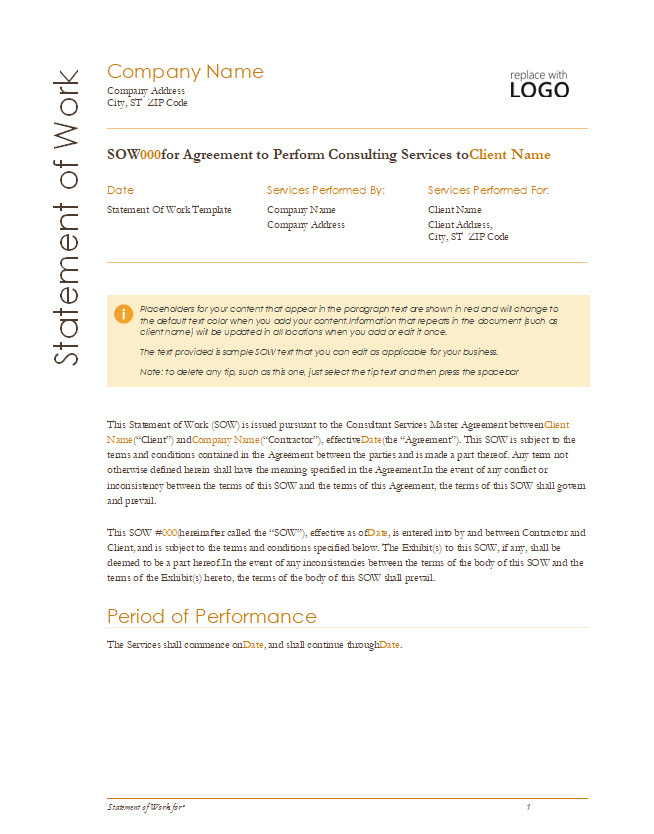
Why is a Statement of Work Important?
A statement of work is important for several reasons:
1. Clear Communication:
An SOW ensures clear communication between the client and the service provider. It eliminates any ambiguity or misunderstandings by clearly defining the scope of work, deliverables, and requirements. This helps prevent any potential conflicts or disputes that may arise during the project.
2. Project Scope Definition:
A SOW helps define the scope of the project. It outlines the specific tasks and activities that need to be completed, as well as any limitations or exclusions. This helps manage expectations and prevents scope creep, ensuring the project stays on track.
3. Deliverable Identification:
An SOW identifies the deliverables that need to be produced as part of the project. This includes any documents, reports, or products that need to be delivered to the client. Clearly defining the deliverables helps set realistic expectations and ensures the client receives what they are expecting.
4. Requirement Documentation:
A SOW documents the requirements of the project or contract. This includes any specific standards, regulations, or guidelines that need to be followed. It also outlines any resources or materials that are required to complete the work. By documenting the requirements, all parties involved have a clear understanding of what is expected.
5. Risk Management:
A SOW helps manage risks associated with the project. By clearly defining the work to be performed, potential risks can be identified and addressed early on. This allows for proper risk mitigation strategies to be put in place, reducing the likelihood of project delays or failures.
How to Create a Statement of Work
Creating a statement of work involves several steps:
1. Define the Project Objectives:
Start by clearly defining the objectives of the project. What do you want to achieve? What are the desired outcomes? This will help set the foundation for the rest of the SOW.
2. Outline the Scope of Work:
Next, outline the specific tasks and activities that need to be completed. Be as detailed as possible to ensure there is no room for misinterpretation. Include any limitations or exclusions to manage expectations.
3. Identify Deliverables:
List the deliverables that need to be produced as part of the project. Be specific about what is expected and when it is due. This will help set realistic expectations and ensure both parties are aligned.
4. Document Requirements:
Document any specific requirements that need to be met. This includes any standards, regulations, or guidelines that need to be followed. It also includes any resources or materials that are required to complete the work.
5. Define Milestones and Timeline:
Identify key milestones and create a timeline for the project. This will help track progress and ensure the project stays on schedule. Include any dependencies or dependencies that may impact the timeline.
6. Specify Payment Terms:
Specify the payment terms for the project. This includes the total cost, any payment milestones, and the payment schedule. Be clear about any penalties or fees for late payments.
7. Include Legal and Contractual Terms:
Include any legal and contractual terms that apply to the project. This may include confidentiality agreements, intellectual property rights, and dispute resolution mechanisms.
8. Review and Finalize:
Review the SOW with all parties involved and make any necessary revisions. Once everyone agrees, finalize the document and obtain signatures from all parties.
Examples of Statement of Work Templates
Here are some examples of statement of work templates that you can use as a starting point for your projects:
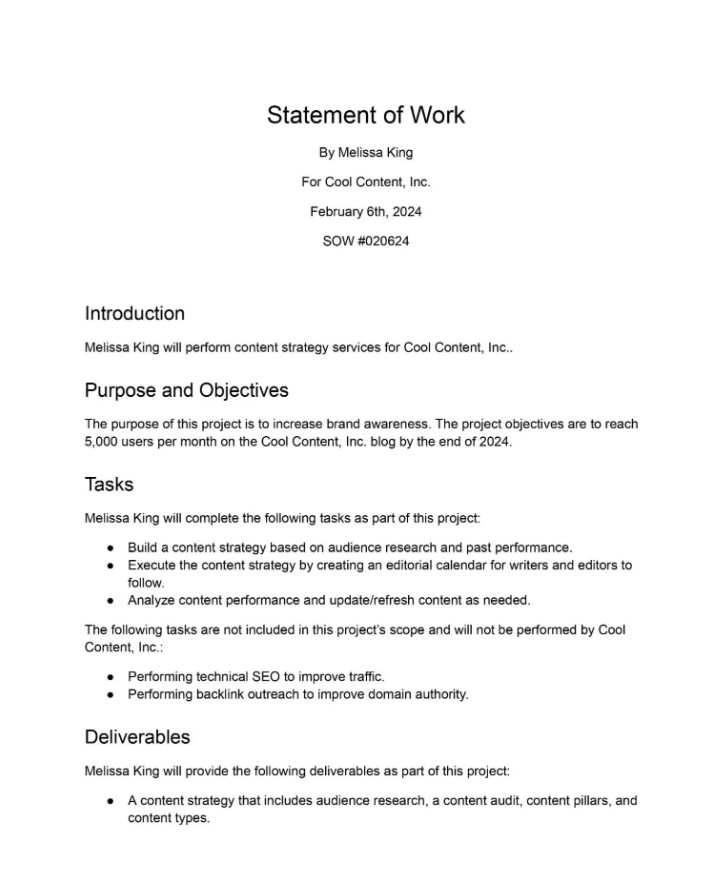
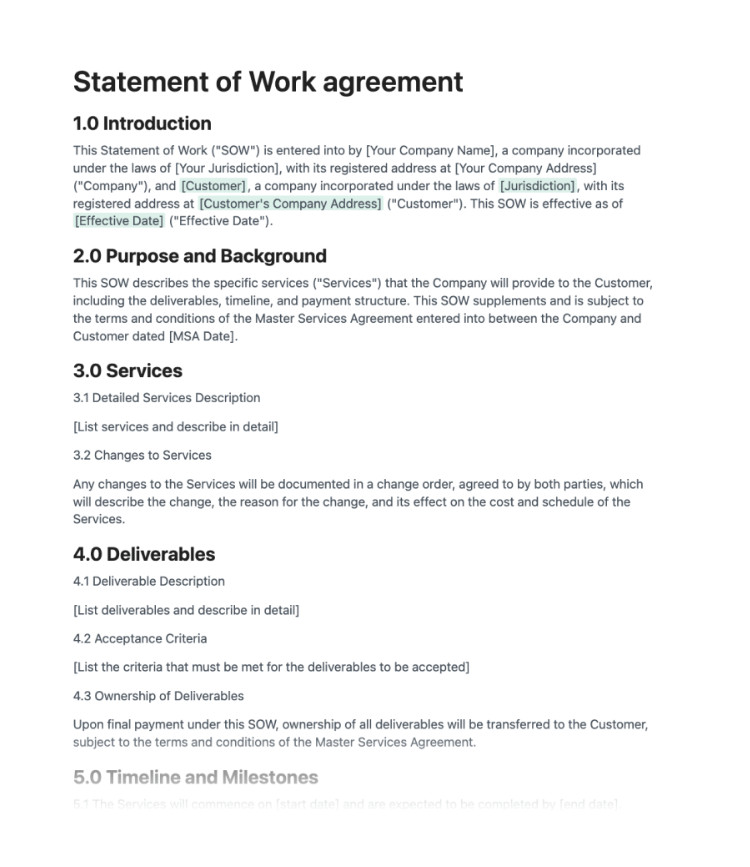
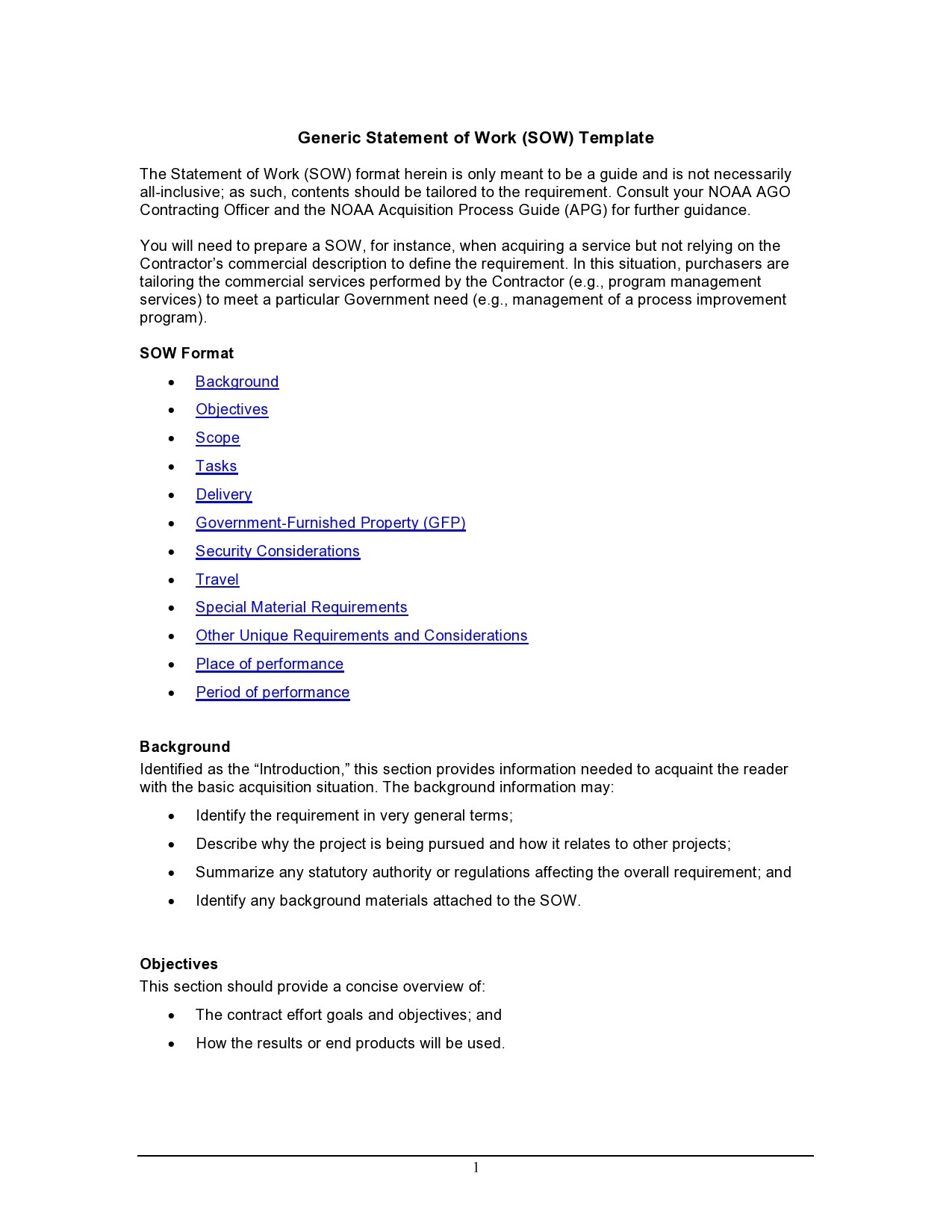
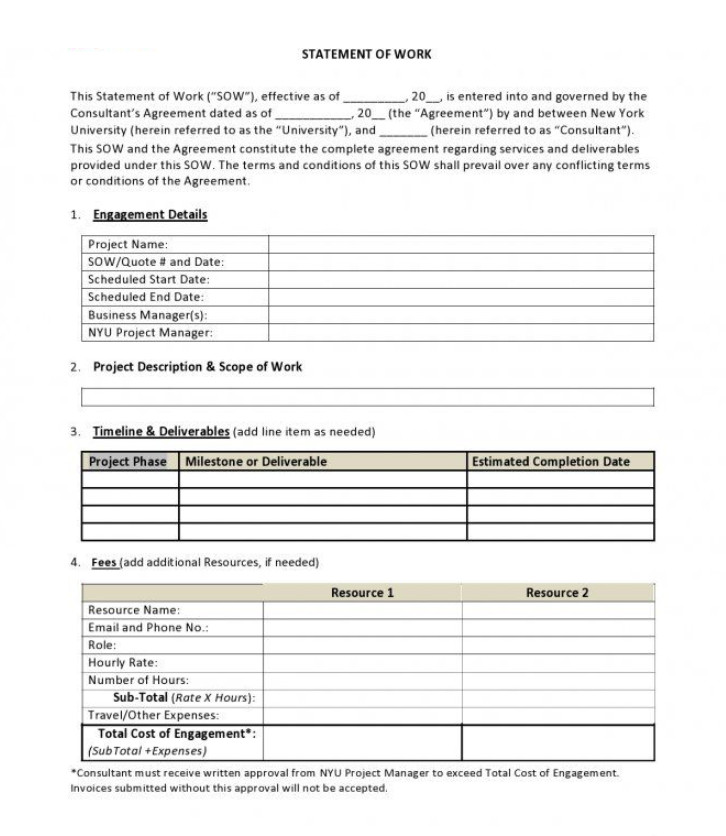
Tips for Successful Project Management
Here are some tips to ensure successful project management:
- Clearly Define Expectations: Clearly define the expectations and objectives of the project from the start.
- Communicate Effectively: Maintain open and regular communication with all parties involved to ensure everyone is on the same page.
- Set Realistic Deadlines: Set realistic deadlines for deliverables and milestones to avoid unnecessary pressure and stress.
- Track Progress: Regularly track the progress of the project to ensure it stays on schedule and within budget.
- Manage Risks: Identify and address potential risks early on to mitigate their impact on the project.
- Document Changes: Document any changes or revisions to the project scope to maintain transparency and avoid misunderstandings.
- Seek Feedback: Seek feedback from all parties involved to continuously improve the project management process.
Conclusion
A statement of work is a valuable tool in project management. It ensures clear communication, defines the scope of work, identifies deliverables, documents requirements, and helps manage risks. By following the steps outlined in this article and using the provided templates, you can create a comprehensive SOW for your projects.
Remember to incorporate the tips for successful project management to ensure a smooth and successful project execution.
Statement of Work Template – Download
- Free Printable Exercise Planning Template - November 24, 2025
- Free Executive Summary Template (Word) - November 20, 2025
- Free Executive Resume Template (Word) - November 20, 2025